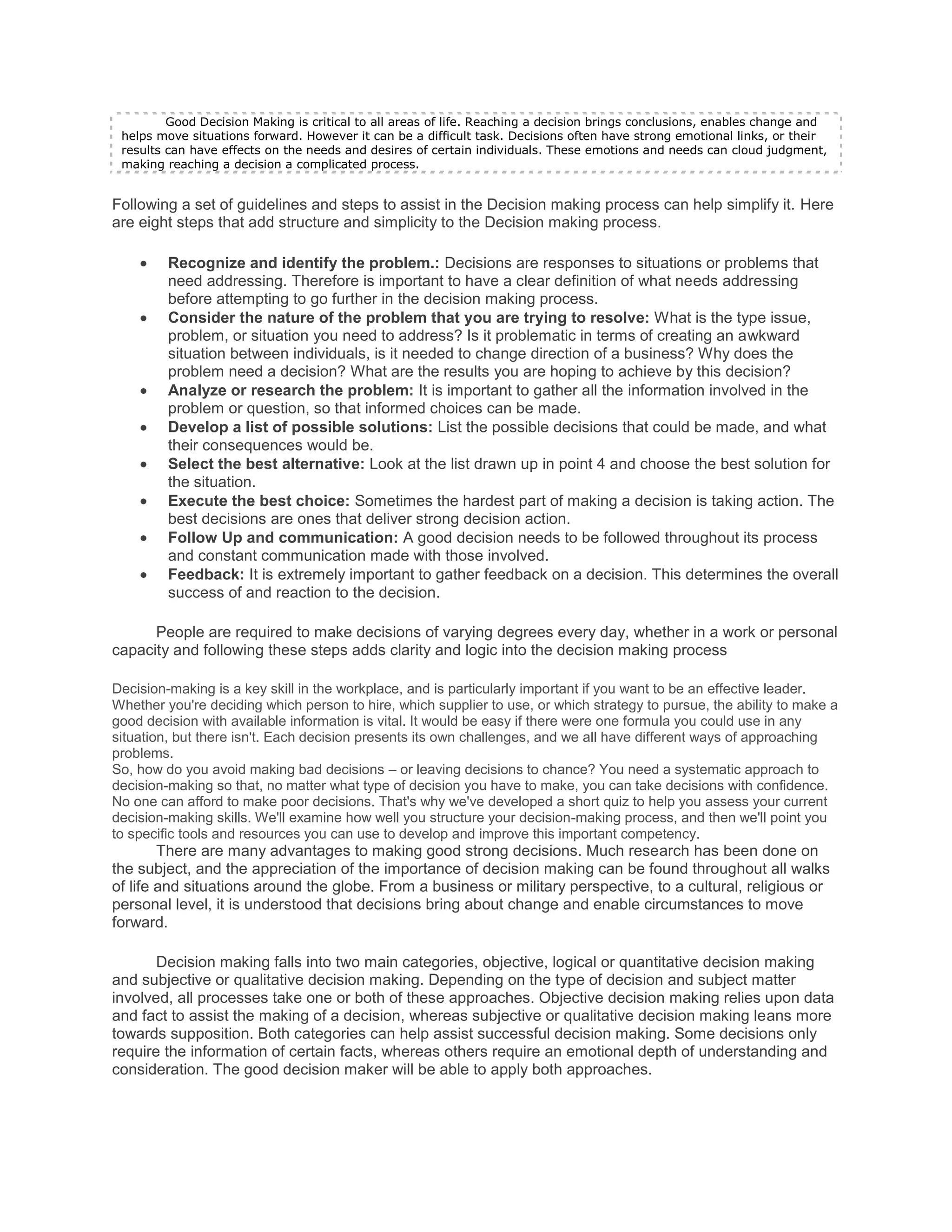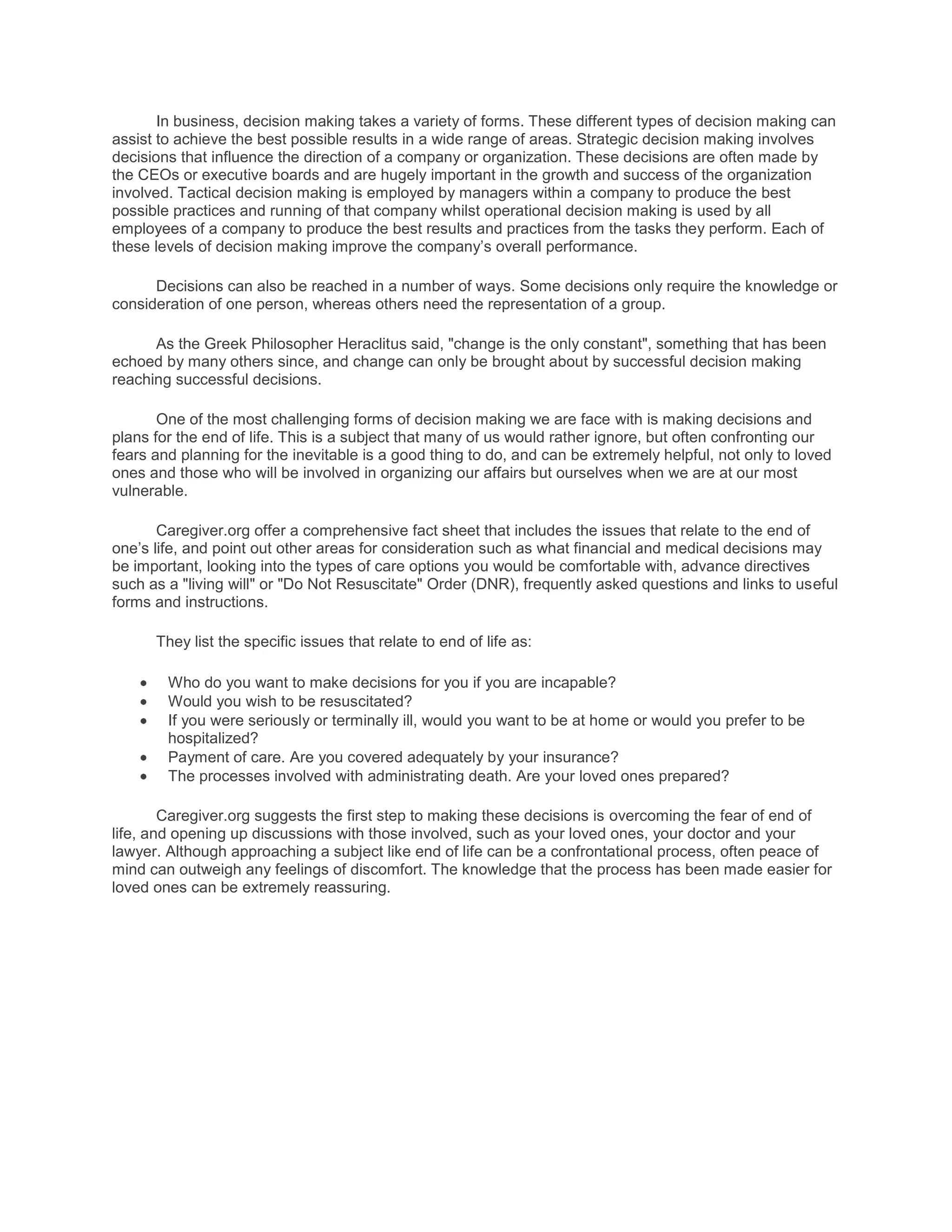Decision making is a key skill that is important in both personal and professional contexts. There are two main types of decision making - objective, logical decisions based on facts and data, and subjective, qualitative decisions based more on emotions and perspectives. Good decision makers are able to apply both approaches appropriately for different situations. Making decisions systematically by following steps like defining the problem, researching options, and evaluating alternatives leads to better outcomes than leaving decisions to chance.

